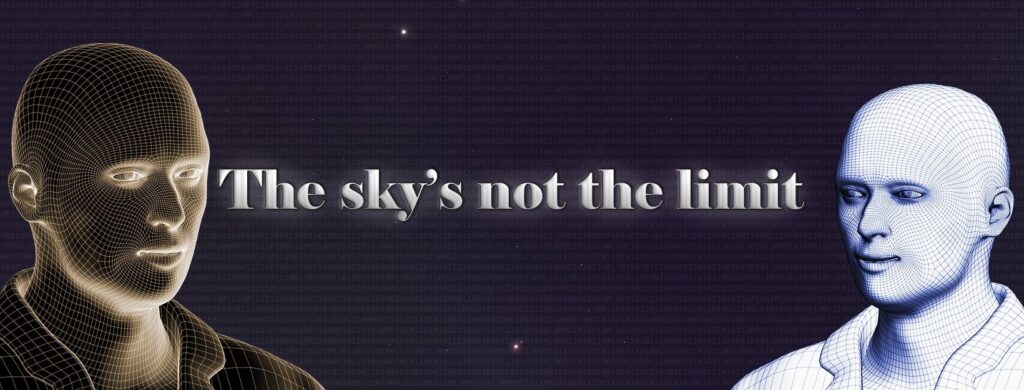Past Future Entertainment is an independent digital creative studio specializing in game design and realistic 3D environment creation. The company focuses on four pillars: immersion, optimization, quality, and innovation.
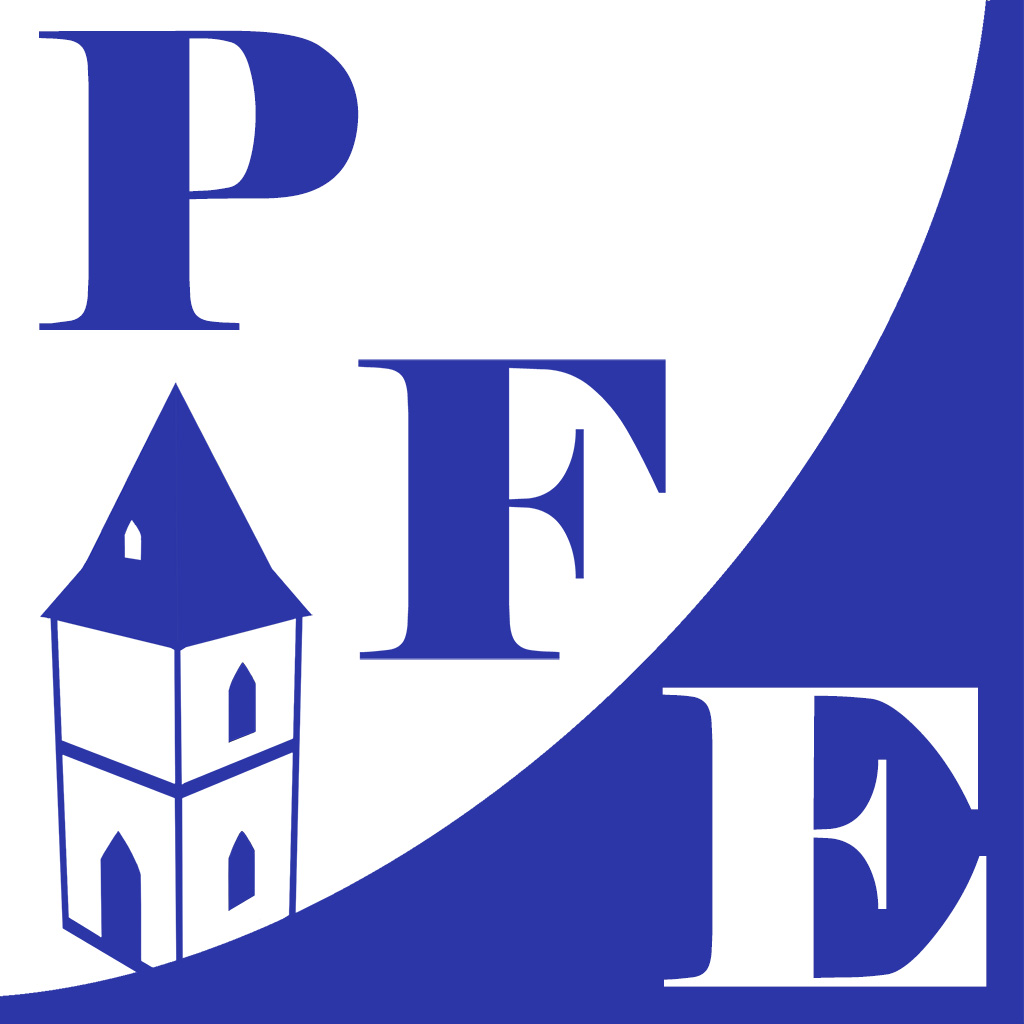
Mission
Past Future Entertainment’s mission is to push the boundaries on what’s possible with minimal resources – realizing and sharing ambitious new projects through innovative, unconventional, and daring yet well-researched approaches.
This includes leveraging newly developed, atypical workflows, tools, and creative opportunities, combined with a mindset that embraces continuous learning, iteration, and agile adaptation to emerging technologies and cross-disciplinary innovation.
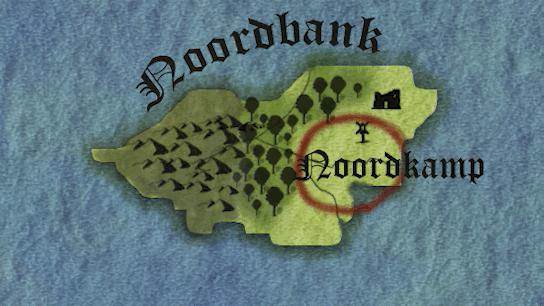
Environments first
Past Future Entertainment specializes in technical game (world) design and realistic 3D environment creation intended for real-time rendering. The approach is to get the game world terrains and environments right prior to the implementation of most game functionalities and mechanics. This ensures that both the narrative and gameplay elements can be leveraged to their full potential. To make them feel realistic and convincing, they are firmly built out on top of and in function of a believable, deeply grounded setting.
This is approached with proper planning and testing, keeping functional and technical designs in constant consideration and evaluation. Past Future Entertainment prioritizes to lock a main, desired ambient look and feel for and project’s intended vision: the environment where all gameplay, logic, navigation, and storytelling will take place must feel like: “Yes, this is it!” to fully enable the functional layers to click in and reach their full potential with implementation.
After that, it’s time to move on to details, set dressing, polishing, and implementing diegetic user interfaces, music, and sound effects.
Building further on top of the established environmental core when implementing functional features, the established look and feel is guarded and evaluated to persist throughout further development iterations. All interaction, functionality, and graphical user interface elements should either fit with, or enhance the look and feel, to improve the overall sum of factors defining the total experience. Otherwise, new additions must be adapted, until matching up.
It is Past Future Entertainment’s well-tested and deliberate choice to work using this approach in own game and environment productions, and by this we are advocating for immersion-first development.
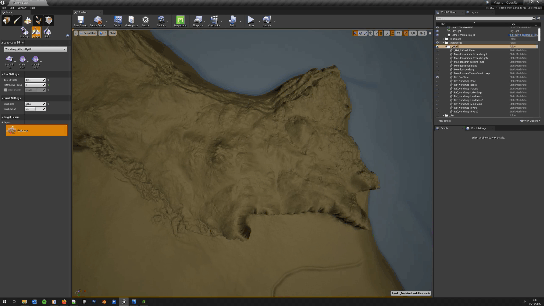
Yes, this world building prioritization approach might be atypical. Most games are developed with an initial focus on prototyping functional development over environment creation. Past Future Entertainment chooses to make games based on strong, well-reviewed, researched game designs, including correctly scaled 2D map designs, written game design documents, technical preparations, and documented tests of feasible technical approaches and optimizations. The game environment literally “sets the scene” for a game where the immersion, and thus consistency of believable graphics and visuals are major importance factors to succeed in translating a vision. On top of that, it is also the part of a game’s production that needs most optimization and iteration to be able to deliver the required performance and quality to players on their own systems. It is easier to adapt functional features in later stages of development following best practices and software architecture principles, over for example changing a whole terrain and its visual narrative, and all functional content built on top of that.
Of course – depending on project and genre, this approach can be irrelevant in certain cases. We are talking about a real example of a historically inspired 3rd person project with a realistic art and architectural style here.

This take on the order of development is only one part of Past Future Entertainment’s overall workflow and approach. The creative vision and feel of a game design is carefully guarded at all stages and enhanced with fitting sound design, and in-house crafted ambient music productions adding an extra “feel” to the “looks”. Have we determined what works out for creating the intended vibe? Great! Then it’s possible to continue to the next stages of development, after making sure the environment runs within the desired frame rate for a project. As you might know, game graphics are rendered in real-time by the computer hardware – they are not prerecorded like movies – and thus need to be optimized to run smoothly on the targeted platforms at intended quality settings. Most of a game’s performance optimization actually happens on the visual elements these days – read: the environments and characters. A minimum of 30 to ideally 60 frames per second on target hardware is desired for a smooth and responsive user experience.
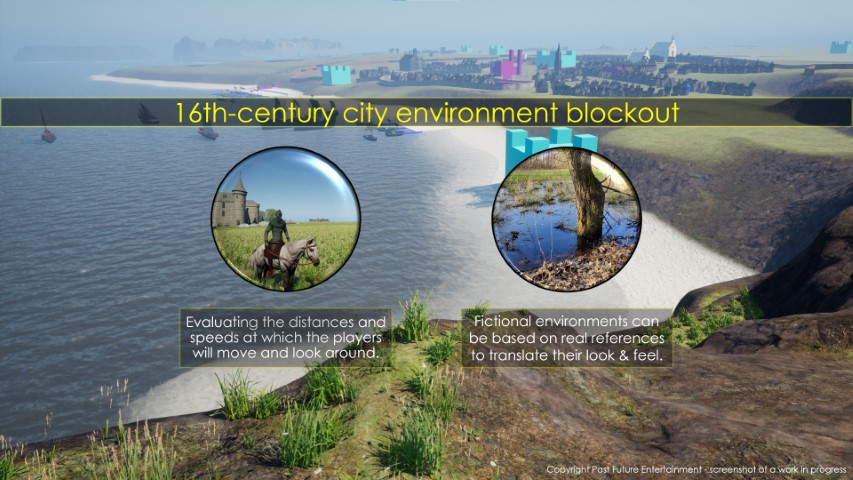
Embracing opportunities
As a game developer, would you create all generic assets like running animations, 3D rocks and trees by yourself, or pay for their creation from scratch while you can license quality assets for a price? Doing that, you would waste precious development time, money, and energy, which could instead be used to focus on what makes your game truly stand out: the content, gameplay, game feel, the game mechanics, the UI, character designs, unique and specific 3D assets, a consistent unique narrative and setting, materials, textures, and environments that truly make the difference in your project.
Would you notice that the character and forest assets shown in the GIF at the top of this article were purchased and licensed for commercial use, if it was not explicitly written here? They shouldn’t be just copy-pasted though! Don’t reinvent the wheel, but adapt it to your needs, art style and setting. Use custom materials and textures. Curate and use assets in function of your design, don’t design games in function of available generic assets. New opportunities in the IT and digital entertainment industries are constant – just like change is omnipresent – and options evolve constantly, pop-up in large numbers and will continue to do so. Some are here to stay and can be built upon, while some are quickly replaced by improved alternatives.
However, game development did not not become easier. It became more accessible. No absolute need to spend energy on developing tools, and rather focus resources on leveraging these new options and opportunities also means that you now have to curate and adapt tools, systems and assets to your own workflow and projects. Also, you have to expect changes, be able to quickly adapt and follow up on countless updates. You have to make a lot of choices which can get overwhelming if you don’t set up a structured system to follow up and prioritize the important over the unnecessary. But: can you achieve more these days as an independent developer? A big yes is the answer! Is there more competition? Also: yes! Is that a good thing to safeguard a high quality of your own productions? In my opinion: Yes, never was there a better time to work on digital creative projects! Multiple options for infinitely scalable digital distribution and marketing of your creative digital products and content are literally available within a few clicks or keystrokes.
The value of a strong game design
A strong and flexible design proves to be an invaluable foundation for the efficient realization of new games and digital entertainment creations.
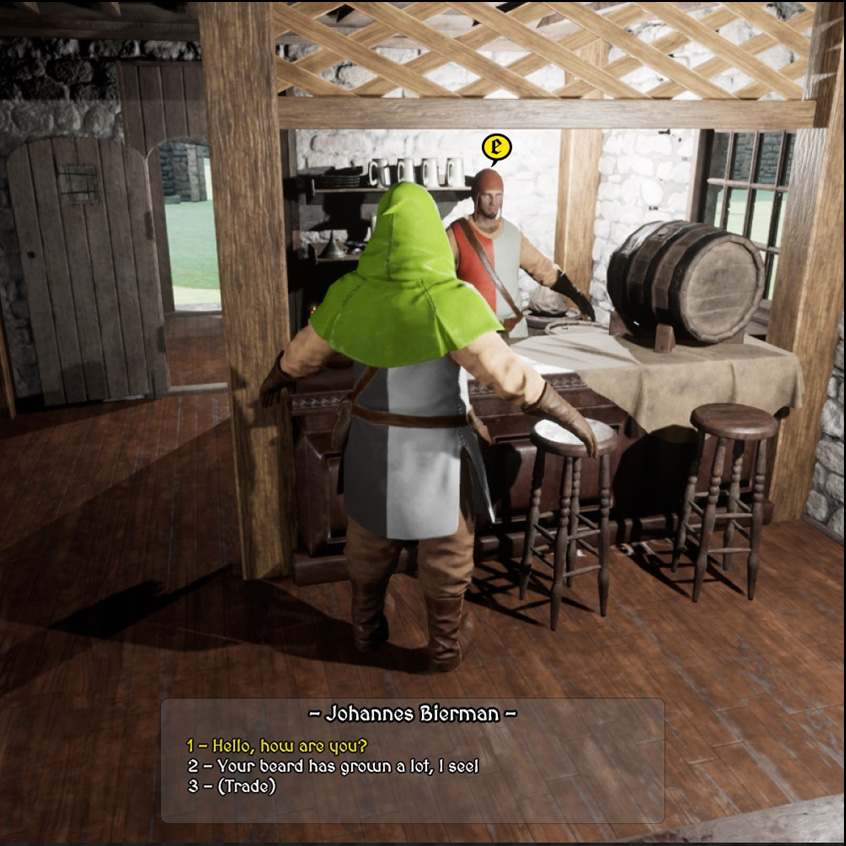
(Video) game design encompasses game (world) design, spanning from crafting believable fictional settings, game world maps, and lore up to inventing convincing characters, stories, quests, systems, rules, items, player motivations and rewards up to manuals, game design documents and visual overview charts. All those things and even more parts – depending on the project – together form the instructions for the whole rest of the production.
Click here to see an example on (secondary) quest design for an in-house project.
The quest ratings in the right top are scores from 0-3 given by multiple proofreaders, to determine which quests need extra work, which ones are the strongest and need more attention, which ones don’t really add a lot of value to the overall design or the ones that are better removed to keep the quality up.

Ideally, the game design also includes a one-pager and a clear visual overview scheme of all relevant building blocks and stages of the whole project. Not only the project manager and producer, but also marketing people, and people in other roles in a game’s production pipeline or team can benefit from the insights coming with such an overview of the big picture.
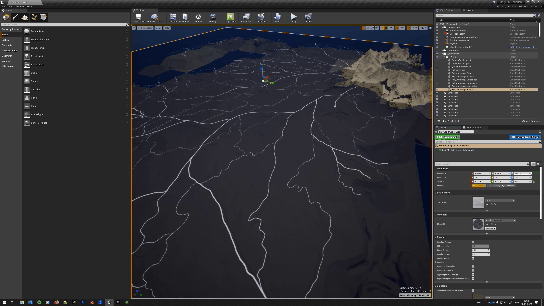
A black & white image mask created from the 2D world map to use as a stencil for reference in Unreal Engine.
By investing in a strong game design, Past Future Entertainment believes all subsequent parts of the production can be better and more efficiently planned, required assets, skills, technical approaches, and functionalities get more clearly defined, and all relevant information can easily be communicated to other or future team members, developers, testers or other future stakeholders. If the production needs a pitch deck to raise funding, these resources can prove to be of invaluable help. Proofreaders and their feedback are invaluable to improve on designs: removing the weakest points, clarifying what is not clear to the readers.
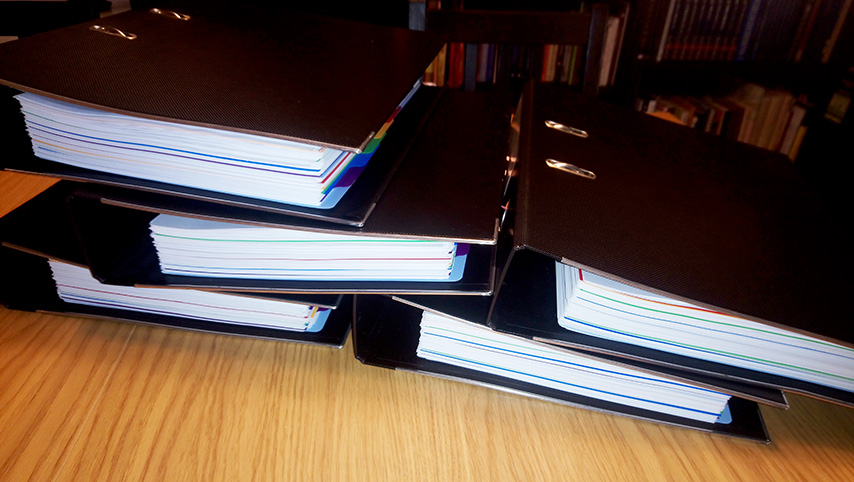
For both video games and tabletop game projects, the design phase continues during the creation of functional prototypes and is iterated upon to improve the products based on findings, feedback and gained insights. Depending on the project, some elements of game design can be translated and reused into product media, information pages on the game’s website and in other (social) media and marketing: you don’t have to start from scratch for any of those tasks.
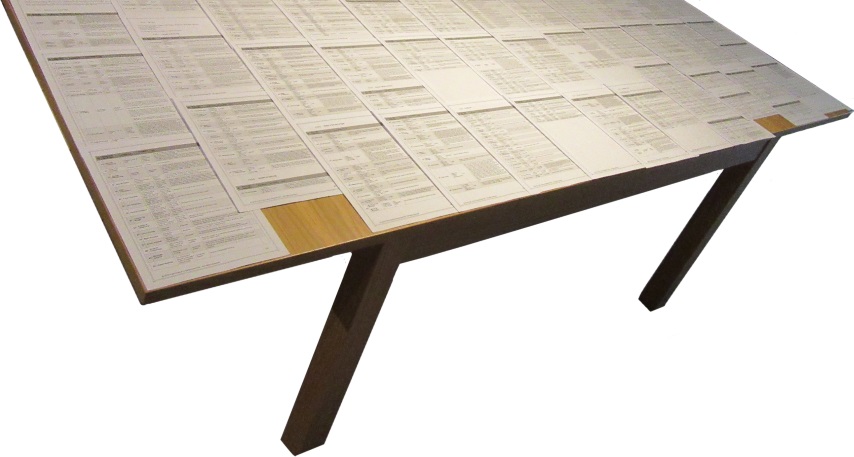
During all phases of game design and development, the project scope, budget, technical requirements, implementation workflows, tools, game engine and other software updates, optimizations, end-user hard-and software, unavoidable unexpected changes and new opportunities are taken into constant evaluation.
It is very important to dedicate some time thinking about those things, evaluating them in the context of your project and making clear decisions before moving further. Evaluating a multitude of options is a process that can seem daunting but can actually be quite fun. Milestones, external deadlines and timed goal setting can help here, as it is possible to get stuck in this process for long.
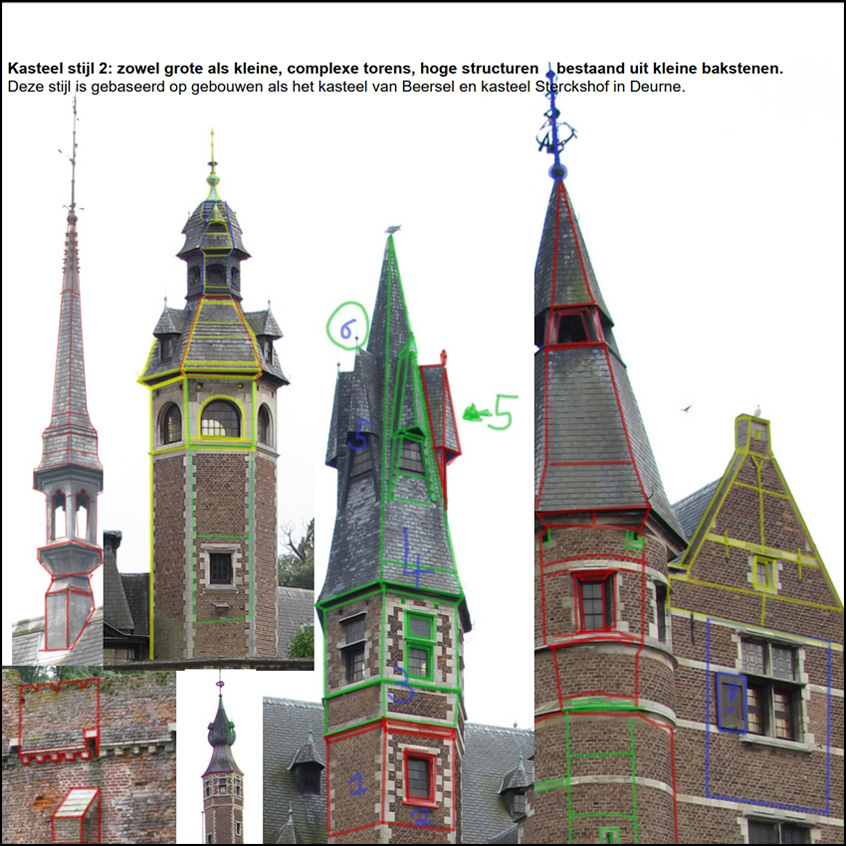
Living and working in Europe benefits historical and realistic project designs, as real-life references are all around.

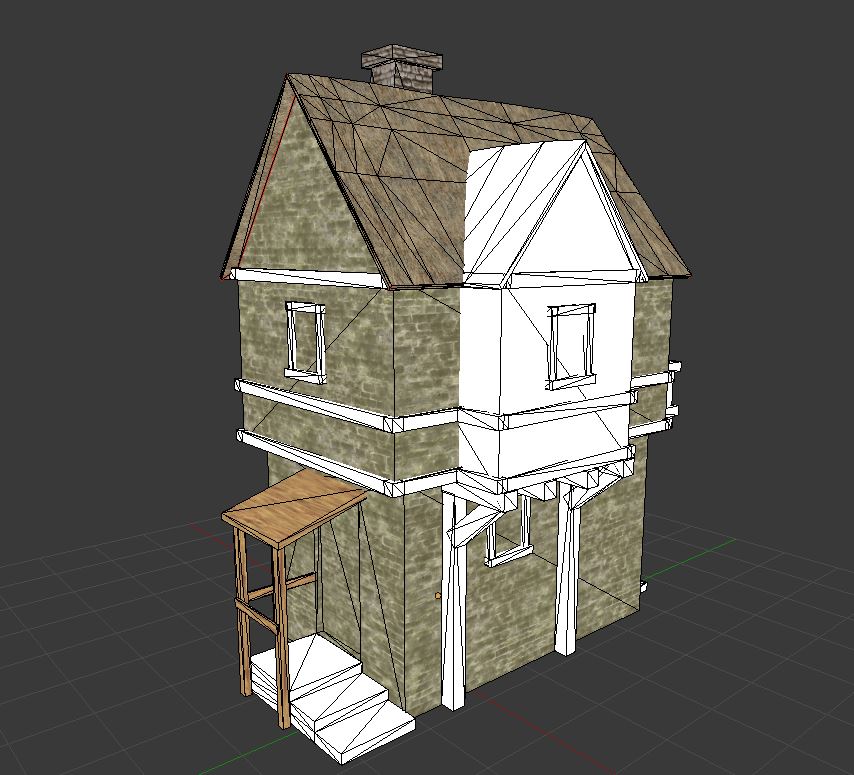
Example of the classic way of 3D modeling: buildings in one piece.
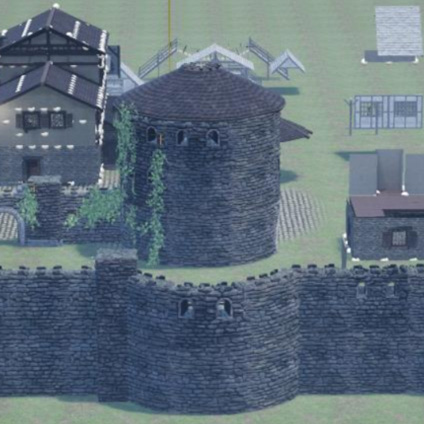
When working with sets of carefully curated modular parts, fitting a defined grid size – you can create virtually endless, instanced combinations and variations of any structures.
The why?
Past Future Entertainment was founded by Wouter De Block. He ended as finalist in Larian studio’s “design your own game” contest back in 2011 and is designing (video) games since childhood. After studying film for a year, finishing a bachelor’s degree in applied informatics and attending one year of digital arts and entertainment (“DAE”) at Howest in Kortrijk, he worked as an IT-consultant. But during those five years of consultancy, he continued to study game development by himself on the side, along with research and design for one particular video game project during many evenings, nights, weekends and vacations.
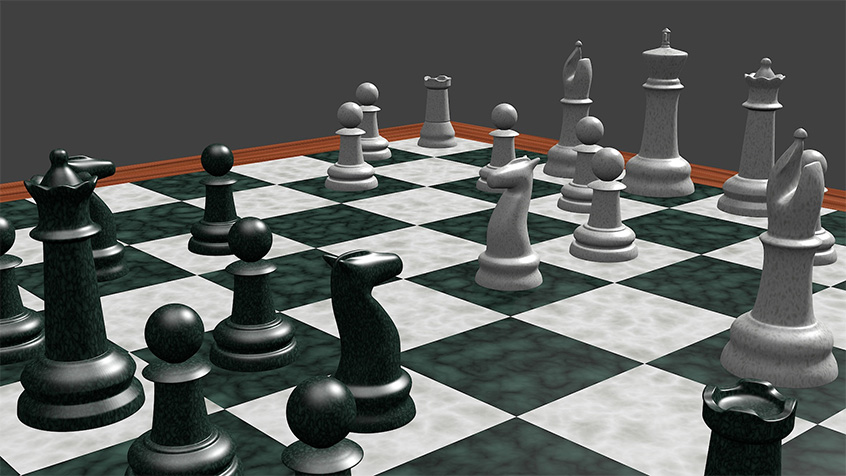
While looking for a new challenge to align with this creative drive, there were no open vacancies for game design or game development jobs in the wide area.
So Wouter made the decision to chase after his dream and start his own company. To be able to do this, the opportunity that was not present itself just had to be… created! After diving into tens of online courses, business starter guides, a whole trajectory of seminars, and gathering answers to some hundreds of questions, Past Future Entertainment was founded in 2019.
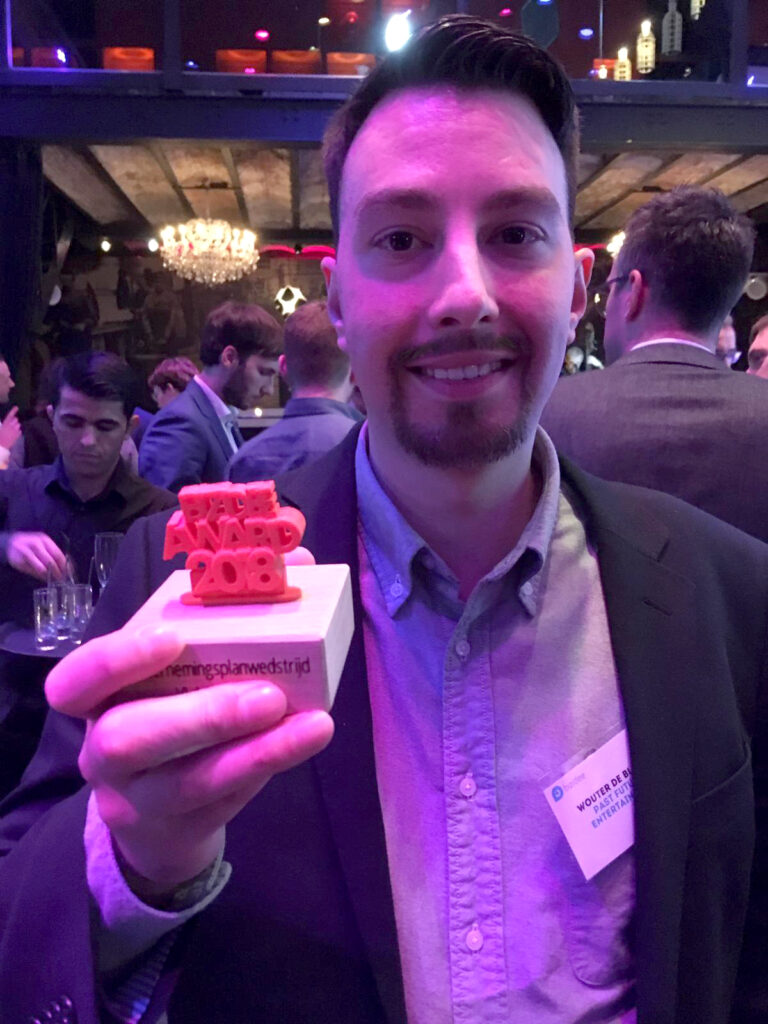
The business plan for Past Future Entertainment won an award as a top-6 finalist in the category “small” of the yearly business plan contest of Flanders (Belgium), organised by Bizidee in 2018. This edition of the contest had 110 applicants. This was in the year before the company was established (2019). Any businesses needs strong planning and designs, a mission and vision, along with goals on both short and long term. Just like a game project. And most importantly: flexibility and iteration on all, certainly workflows and tools.
Also, what if plan X fails, or Y happens? If you decide to take the risk of starting a new business and put in all your savings, a strong plan is one good starting point and an aid, but reality never turns out as planned. It can be worth it to be a bit prepared for this and think of alternative scenarios to fall back on, in a world and industry where change and innovation are the norm.
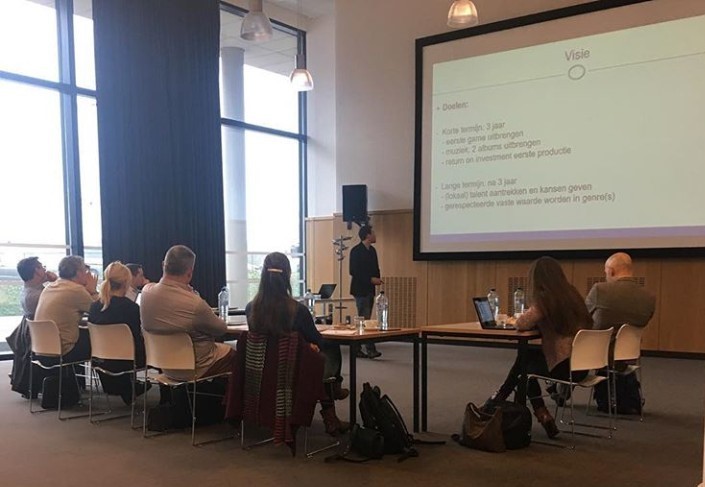
So here we are today, passionately working on a game project and more creative endeavors. It was far from a walk in the park in the past, it is not today, and it won’t be in the future. But, overcoming challenges unavoidably comes with lots of lessons and growth, and ultimately there will be fun products to share with the world. Hopefully, you will be able to enjoy the results.
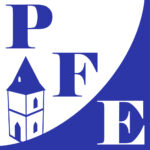
Past Future Entertainment is 100% privately funded. This enables the company to keep complete control over all creative productions, quick iterations on workflows and decisions, and a correct execution of the mission and vision. That does include some calculated risks, but reflects the firm belief in a successful outcome. Daily, consistent action propels anything forward. And so can you, one step at a time, transform your own personal creative dreams into realities! Set a goal, start today, and you will be reaping the results of consistent effort over time.
If you would like to support this endeavor and boost the chances for all these projects to succeed, you can do that here via Ko-Fi, safe and secure.
Need an extra hand on your project?
Past Future Entertainment now offers creative services: Click for more info!
